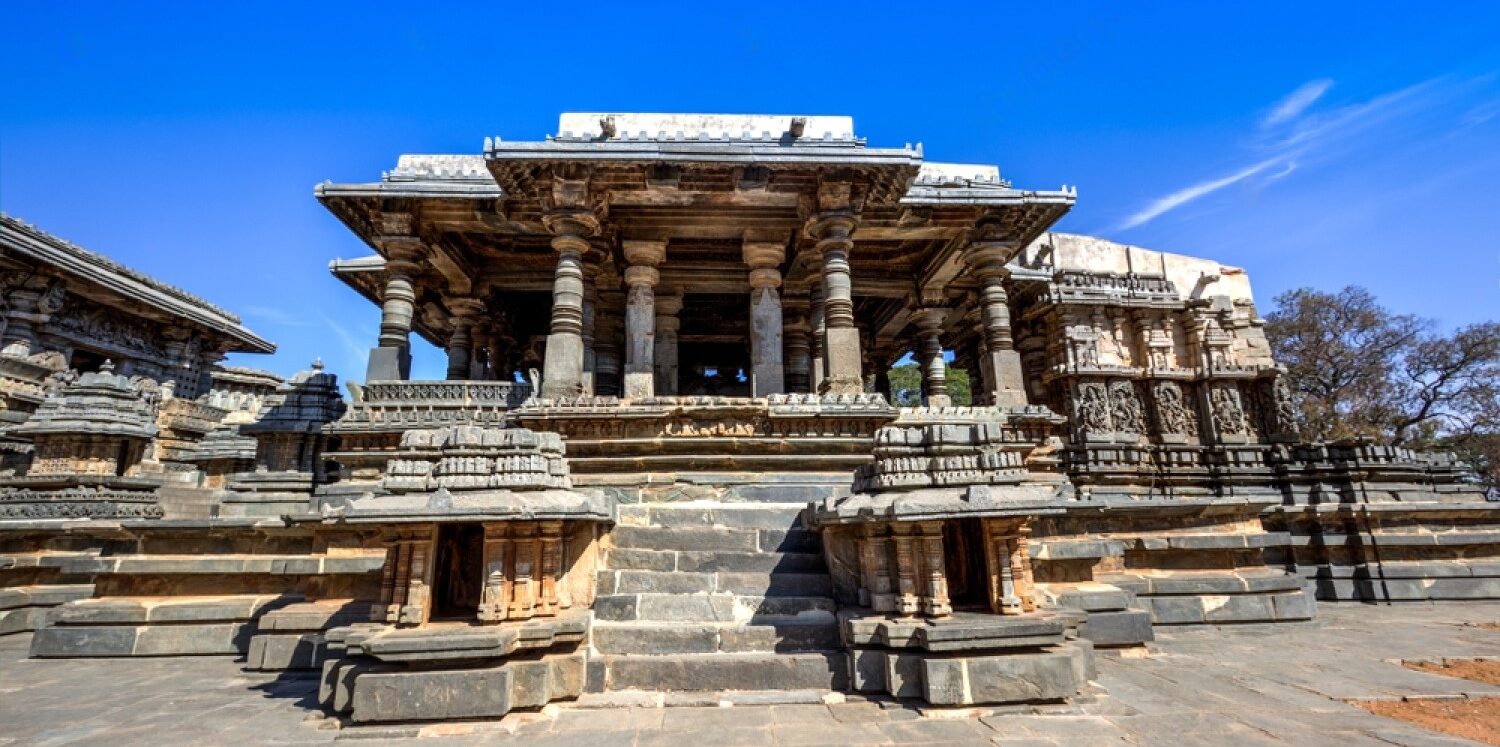Table of Contents

Hoysala Empire
- The Hoysala Empire ruled parts of Karnataka between the 10th and the 14th century.
- They were feudatory under the Cholas or the Western Chalukyas.
- The capital of the Hoysalas was initially located at Belur (Hasan district of Karnataka).
- Vishuvardhana (1110-1152 AD), the first notable ruler of this kingdom, shifted the capital from Belur to Dwarasamudra (present-day Halebidu). He was attracted to Vaishnavism after coming under the influence of Ramanuja.
- The Hoysalas were famous temple builders and are remembered today primarily for architecture.
- The empire started to decline gradually after its defeat twice, in 1311 and 1327 by invading forces of the Delhi Sultanate.


Architecture of Hoysala Empire

| Hoysaleswara Temple | Location – Halebidu The temple was built by Vishnuvardhana. Its construction started around 1121 CE and was completed in 1160 CE. |
| Chennakesava Temple (Vishnu) | Location – Belur Built by Vishnuvardhana in 1117 CE |
| Kesava Temple | Location – Somanathapura The temple was built during the reign of Narasimha III in 1258 CE. |
| Veera Narayana Temple | Belavadi, Chikkamagaluru district, Karnataka |
| Amrutesvara Temple | Amruthapura The temple was built in 1196 AD during the reign of Veera Ballala II. the inscription contains poems composed by the Kannada poet Janna (Kavichakravarti) |
| Lakshminarayana Temple | Hosaholalu, Mandya, Karnataka built by Vira Someshwara in 1250 AD |
| Nageshvara-Chennakeshava Temple complex | Mosale, Hassan District |
| Mallikarjuna Temple | Basaralu, Mandya, Karnataka |
| Brahmeshvara Temple | Kikkeri, Mandya district, Karnataka It was completed in 1171 AD during the reign of Narasimha I. |
| Akkana Basadi | A Jain temple, built in 1181 AD during the rule of Veera Ballala II. |
